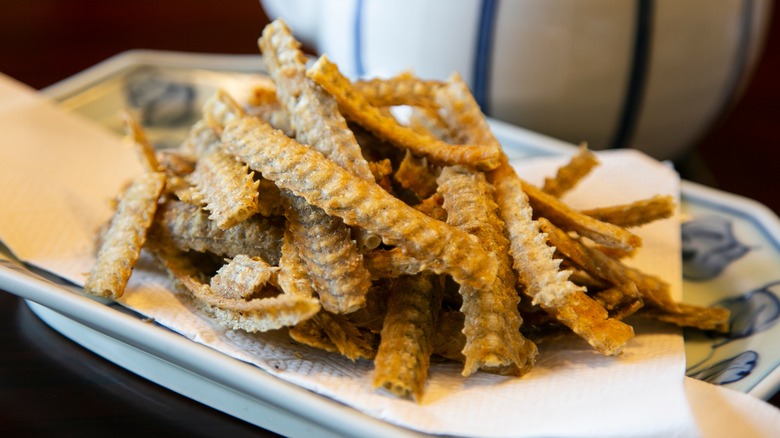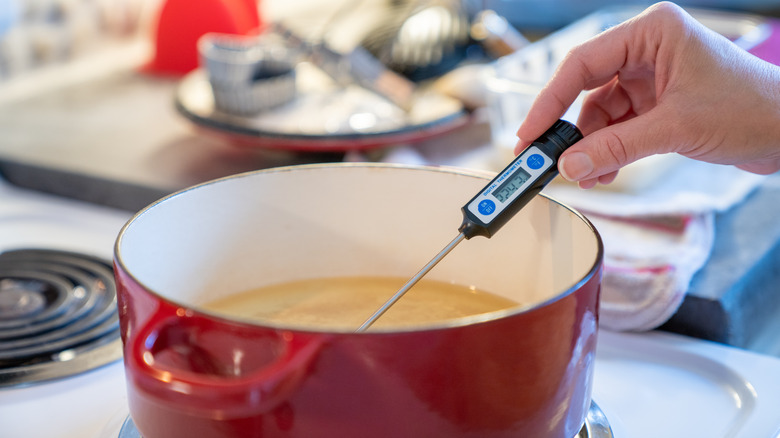The Cooking Method That Turns Fish Bones Into A Tasty Snack
We may receive a commission on purchases made from links.
Zero-waste cooking is en vogue. From chef Fergus Henderson — the grandaddy of nose-to-tail eating, whose iconic St. JOHN restaurant is famous for using often-overlooked parts of animals — to the thriftiest of home kitchens, people are making the absolute most of their ingredients now more than ever. For most, this extends about as far as making stock from the remains of a chicken or tossing prawn heads into a pot for a flavorful fish stock. But that's only the beginning when it comes to making the most of your kitchen scraps. For one of the finest no-waste recipes, look to Japan — specifically, the popular izakaya dish of deep-fried fish bones.
To Western palates, the idea of eating fish bones might seem unfamiliar, especially since many people spend so much time ensuring that they remove all the bones from their fillets. But in the Eastern hemisphere, they're a common bar snack. It's easy to see why — crunchy, salty, packed with umami, but light and fresh, they're the perfect accompaniment to a cold beer. They're easy to make at home, too. All it takes is a few minutes in piping-hot oil until they're golden brown and shatteringly crisp. Then, drain them and hit them with a generous amount of salt (or any other seasonings you prefer — MSG is a fantastic way to bring out the best of that fishy flavor). You'll have a crunchy snack that's perfect on its own, doused in soy sauce or vinegar, or even dipped in homemade tartar sauce.
Tips and tricks for frying fish bones
When it comes to choosing which bones to use, you've got a couple of options. Small fish, like whiting or sardines, are a good bet. They require little preparation before cooking, but are admittedly a bit trickier to remove from the fish. Larger fish like salmon or snapper also work — just be sure to separate the bones into manageable chunks before frying. You don't have to clean the bones too much — leaving a little extra flesh on them will only make the final product taste better once the meat gets all brown and crispy.
When doing this at home, there are also a few considerations to keep in mind to deep-fry safely without burning anyone (including yourself!). Use a cooking thermometer so you know the temperature of your oil at all times — this'll help you avoid any burning or splattering. Make sure you're using a heavy-bottomed pan, like a Dutch oven, and never fill it more than halfway to avoid potentially dangerous spills.
Choosing the right oil is also important. Usually, vegetable oil works best — it's neutral in flavor, so it won't impact the taste of the fish, and it can handle the high temperatures of deep-frying without triggering your fire alarm. If you need an alternative, some great oil substitutes for deep-frying include canola, sunflower, grapeseed, and even coconut oil. That's pretty much all there is to it! So go on — crack open that beer, and happy snacking.


